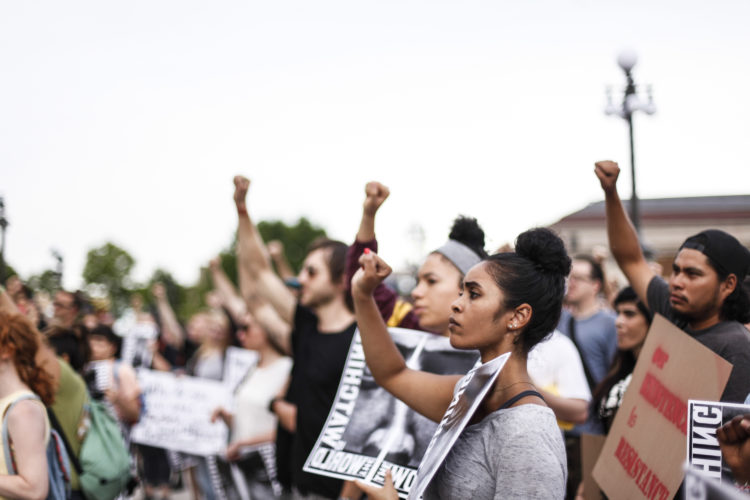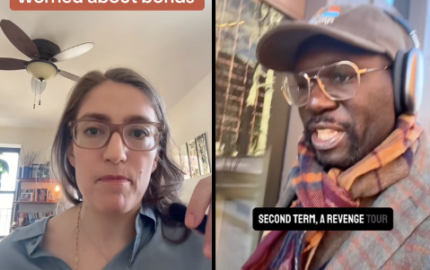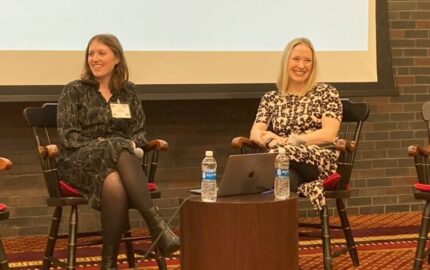On July 6, 2016, Philando Castile was killed by police officer Jeronimo Yanez during a traffic stop in suburban St. Paul, Minnesota. In the car with Castile at the time of the shooting were his girlfriend, Diamond Reynolds, and her 4-year old daughter. The immediate aftermath of the shooting was streamed live on Facebook by Reynolds, who continued to talk with the officer while Castile lay slumped and dying at her side.
The Facebook stream reached people all over the world and within hours had millions of views. That’s also how it reached reporters at Minnesota Public Radio.
The MPR newsroom mobilized to cover the obvious stories, from the breaking news of the shooting to the protests they sparked to larger issues about racial profiling, police shootings and procedures at traffic stops. But when the Ramsey County attorney announced, four months after the shooting, that the police officer was being charged on three felony counts, including second-degree manslaughter, a digital team within the newsroom reconsidered traditional news coverage. Editors and reporters challenged themselves with a fundamental question:
How do you present breaking news and the roll-out of consequences, like those involved in the Philando Castile case, in a way that reveals new information over an extended period while keeping the public engaged?
The answer: A narrative podcast.

At the 2019 Power of Narrative conference, three members of a five-member MPR team that followed the Castile case discussed the process of using long-form narratives and podcasting to track an ongoing news story, which involved the first police shooting to go to trial in Minnesota. Their 22-episode project, “74 Seconds,” won a 2018 Peabody Award. “74 Seconds” refers to time that elapsed from the moment the officer turn on his lights to pull over Castile until the moment he fired seven hots. That was just part of a police dash-cam video that was shown at trial, and then released to the public after Yanez, the officer, was acquitted on all charges.
What's notable about the podcasting approach is that, in Minnesota, trials cannot be recorded. And yet, according to producer and reporter Tracy Mumford, the built-in tension and natural narrative arc of trials lend extended storytelling. “And it’s a great way to give people context.”
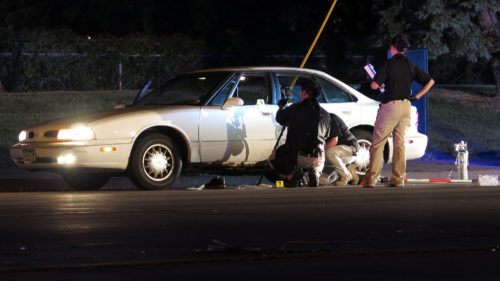
For the first episode of the podcast, MPR went back to the beginning. The team wanted to provide context relevant to the start of the case even if listeners had kept current on the rolling news. That first episode experimented with different types of audio and a mix of storytelling techniques. Events had pushed Minnesota into the center of a larger national conversation about police-involved shootings; by the end of the podcast, “74 Seconds” had nearly as many downloads from listeners in California as it in Minnesota.
An especially effective storytelling technique came in Episode 8, “An Inventory of Philando Castile’s Car.” In it, all of the belongings in Castile’s car at the time of the shooting are listed, taking up eight minutes of audio — almost the entire episode. Details like that helped fill in gaps in the story and fill out the building narrative. There were times during the case that the team would not have a newsy update, but still produced an episode using other pieces from their broader background reporting. It allowed the reporters to provide a fuller picture of how the justice system works, and how the Castile case fit into a larger American conversation.
“Assuming your audience knows nothing keeps you from thinking you know anything,” Mumford said.
In using longform narrative to tell a breaking news story, writers should ask who the story is for — who is the primary audience — and think about how that audience accesses news. Breaking news stories assume that the reader or listener is someone immersed in the continuum of the story. But audiences rarely get a contextual look at a trial or similar event as it is happening. Key to the MPR team was to respect the audience and be transparent about reporting decisions.
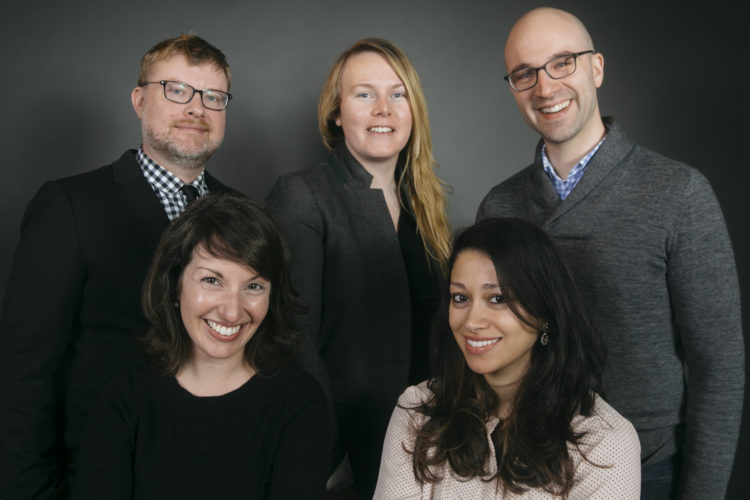
For example, in one episode, MPR played audio of Castile playing a basketball video game. When the trial started, friends and relatives had decided not to talk to the press for fear they would influence the outcome. So the MPR team did a work-around, looking for any online presences that would help develop Castile as a character; they found Xbox footage of him playing video games. While it’s not the same as hearing directly from the family, and is not fully representative of Castile’s life or personality, it provides important, personal glimpses. In airing that footage, the podcasters explained where the information came from and why they were using it.
Throughout the real-time podcast, while waiting for news developments, the team was constantly looking for ways to move the narrative forward. Example: Reporters went back through their reporting notes and found a man who was interviewed during the protests that erupted in response to the shooting. That first interview hadn't been used, but the man was asked in for a follow-up interviews, once before the trial and again after the not-guilty verdict.
The lesson: keep all of your reporting, including that from the original event, and draw on it for future stories. MPR felt it was important to include community responses to the shooting; the follow-up interviews with the protestor helped provide a different perspective and move the story forward.
Another key lesson from the MPR team: Maintain an organized record of your interviews and anticipate key events — trial dates, who was scheduled to testify, how the judicial process worked — helped the MPR team craft a narrative that not only recorded specifics of the Castile case but also took audiences through a narrative arc.
